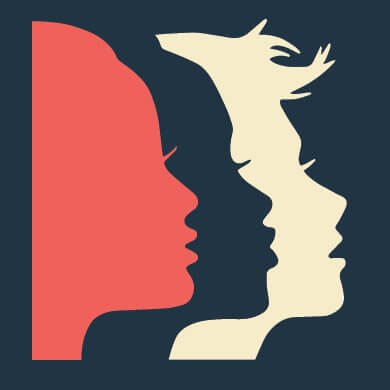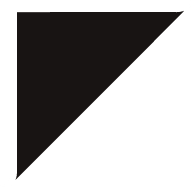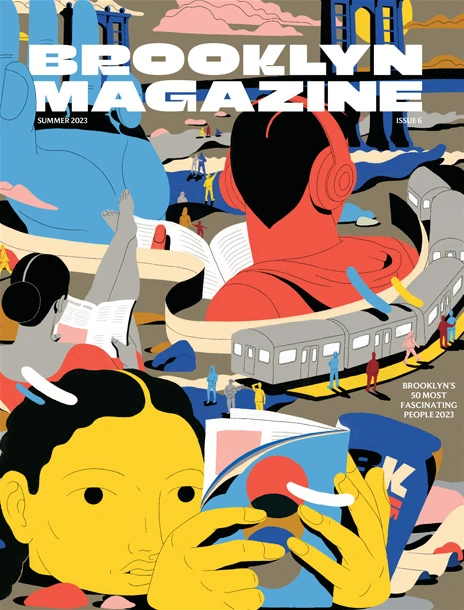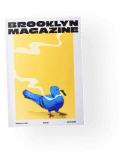In Protest: A Reading List for the Resistance
On Saturday, January 21, 2017, a reported 2.5 million people around the world marched in solidarity with women and the feminist community. Yet while the Women’s March certainly received its fair share of criticism and critique, the most divisive blowback didn’t spout from the shriveled mouth of Piers Morgan, but from the feminist community itself.
Many were discouraged by the initial failure of the Women’s March to place women of color in leadership roles. Others were dispirited by the March’s lack of a concrete, actionable political platform. There was also the overwhelming notion that, among the marchers themselves (many of them white, inexperienced activists), there was a failure to fully realize the intersectionality that the feminist movement so desperately needs in order to move forward.
Indeed, for every question the Women’s March answered, it posed another: Millions showed up to voice their support for women’s issues, and yet why were so many of those millions middle-aged blondes posing for friendly pictures with cops? The March amassed a wealth of press coverage, but where will that raw momentum now be directed? Mothers and daughters cried out “my body, my choice!” in unison, but were they able to engage in a political dialogue based on feminist principles afterward?


These questions can all be answered with a simple truth: much of the feminist movement is lacking the vocabulary necessary to take the next steps. Though the intentions were good and the signs glittery, many women likely returned home from Saturday’s March and shed the identity of activist, along with their pussy hats, at the door. If the March is going to build something other than a slightly-rebellious Facebook memory, the next step is all too clear: education. The feminist movement has made it this far not through tweets, but through theory.
In order to organize the community around action, one must first take a moment to simply listen. In this case, listening takes the form of submerging oneself in the voices of feminists, past and present, whose work extends far, far beyond a breezy Saturday in January. The readings set forth in this list are not to be viewed as yet another scenario in which marginalized women are once again responsible for entering the scene and scrubbing away the mess of others. Rather, these readings are the start of an opportunity for one to better understand a multitude of identities apart from their own, to re-evaluate how their activism and sisterhood can better perform knowing that feminism is not a binary system, and to educate oneself to the fullest extent possible so that the unification of the feminist movement can lead to a new kind of future that hasn’t yet been realized–but that we can realize in our lifetimes.
On Intersectionality – Intersectionality is not a buzzword (nor a brand, thank you very much), but a philosophy recognizing the complex identities we have, and how the different elements of our identities comprise a more nuanced whole. It is a philosophy that says, “yes, we are all women–but we are not all the same woman.” Intersectionality is the basis on which the contemporary feminist movement will succeed.
Kimberle Crenshaw, “Mapping the Margins: Intersectionality, Identity Politics, and Violence Against Women of Color”
Flavia Dzodan, “My Feminism Will Be Intersectional or it Will Be Bullshit”
bell hooks, “Feminism is for Everybody”
Audre Lorde, “The Uses of Anger”
On Ecofeminism – Ecofeminism is a school of feminist thought that first evolved in the 1970s and centered on the inherent connection between the marginalization of women and the marginalization of the environment. After a period of colonization and exclusion (think 90’s Lilith Fair types wearing knockoff aztec ponchos), ecofeminism is being reclaimed as a legitimate philosophy, particularly as it pertains to indigenous communities.
Andy Smith, “Ecofeminism through an Anticolonial Framework”
Lindsay Nixon, “Eco-Feminist Appropriations of Indigenous Feminisms and Environmental Violence”
“Niamh Moore, “The Changing Nature of Eco/Feminism”
On #NoDAPL – At the Standing Rock Sioux Reservation, women are spearheading the fight against the Dakota Access Pipeline that is threatening both the environment and indigenous communities. The #NoDAPL movement has drawn attention not only to the at-risk environment, but to the at-risk indigenous women who fearlessly continue to lead this ongoing movement, showing the function of ecofeminism in practice.
Mahroh Jahangiri, “New pipeline will keep us dependent on an industry that harms women”
Taté Walker, “3 Things You Need to Know About Indigenous Efforts Against the Dakota Access Pipeline”
Millissa Kingbird, “The Women at Standing Rock”
On Differently-Abled Bodies – A lack of physical accessibility in feminist organizing spaces, combined with an overwhelming lack of empathy, have left many differently-abled women excluded from the movement. Physical accessibility is something that may not regularly cross the mind of an “average” person–but it should.
Amber Cantrell, Ashley Maggio, Alison Piepmeier, “Disability is a Feminist Issue”
Elizabeth Heideman, “#YesAllWomen but Not Really: How Feminism Leaves the Disabled Behind”
Rosemarie Garland-Thomson, “Feminist Disability Studies”
On the Transgender Community – The feminist movement has time and time again neglected, if not abused, its transgender sisters. Vagina/uterus-centric language and the “woman born women” philosophy only deepen the scar that spans generations. It is time for this embarrassing legacy to cease and for all women to be made welcome at feminism’s table.
Tina Vasquez, “It’s Time to End the Long History of Feminism Failing Transgender Women”
Emi Koyama, “The Transfeminist Manifesto”
Julia Serano, “Whipping Girl: A Transsexual Woman on Sexism and the Scapegoating of Femininity”
On Latinx Feminism – There is a tendency among white feminists to refer to anyone not like them simply as a “woman of color.” But “not white” is not an identity, and one must educate themselves on the the nuanced backgrounds of others. Latina/Latinx women are providing critical perspectives on issues like language and gender, immigration, and cultural appropriation.
Cherise Charleswell, “Latina Feminism: National and Transnational Perspectives”
Margaret Villanueva, “Ambivalent Sisterhood: Latina Feminism and Women’s Studies”
María R. Scharrón-Del Rίo, Alan A. Aja, “The Case FOR ‘Latinx:’ Why Intersectionality is Not a Choice”
On #BlackLivesMatter – The Black Lives Matter movement has grown to receive widespread recognition for its work on reforming a criminal justice system that disproportionately affects young black men. However, the organizers behind the movement, many of them women, want to ensure that women like Sandra Bland and issues such as violence against black women do not remain exempt from this growing conversation.
Marcia Chatelain and Kaavya Asoka, “Women and Black Lives Matter: An Interview With Marcia Chatelain”
AnaLexicis T. Bridewell, “Black Lives Matter: Why Black Feminism?”
Michelle Alexander, “The New Jim Crow: Mass Incarceration in the Age of Colorblindness”
On Asian Feminism – Women from the Middle East, Southeast Asia, and Eastern Asia have been underrepresented in feminist spaces since the movement’s inception. Now, Asian feminists are making up for years of exclusion by contributing vital conversations on the topics representation within the feminist movement, and womanhood in Asian cultures.
Lindsey Yoo, “Feminism and Race: Just Who Counts as a ‘Woman of Color?’”
Sayantani DasGupta, “Dear Racist Yogini: It’s South Asia Calling and We Want Our Yoga Back”
Grace Ji-Sun Kim, “The Invisibility of Asian Americans”
On Sexual Orientation – Presently, feminism is one of the most fertile grounds for explorations of gender and sexual identity. However, one must acknowledge the reality that feminism’s past includes using sexual orientation to exclude.
Alok-Vaid Menon, “Coming Home: Queer South Asians and the Politics of Family”
Eve Kofosky Sedgwick, “Epistemology of the Closet”
Kathy Rudy, “Radical Feminism, Lesbian Separatism, and Queer Theory”
On Mental Health – Remember when women used to be institutionalized for “hysteria” when in reality they were suffering a common case of anxiety? Women’s health, both mental and physical, has long been subject to scrutiny, misdiagnosis, and blatant ignorance. Now, women are working to compensate for centuries of neglect–and creating new revelations every day.
Trina Smith, “Starting the Story: The Neglect of Women and Mental Illness in Feminist Sociology”
Anne Thériault, “Mental Illness & the Male Gaze”
Susan M. Reverby, “Feminism & Health”
Feminism and Islam – Western stereotypes and prejudices against the Middle Eastern religion consistently muddle the reality of Muslim feminists. In today’s political climate, Muslim communities need our attention and alliance now more than ever.
Rachelle Fawcett, “The Reality and Future of Islamic Feminism”
Tania Idlefonso Ocampos “Secular feminism is silencing Islamic feminism”
Elizabeth Segran, “The Rise of the Islamic Feminists”
You might also like 




















